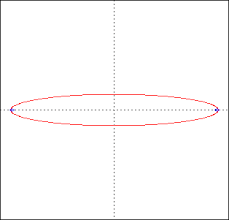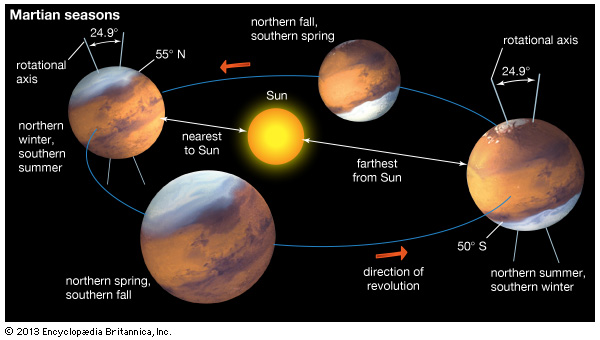Reading before:
There are two pages at this NASA site (until I find a good pdf that covers the same material). Read through both the Basic and Advanced tabs (top right of page) in preparation for this material.
Sun, Earth, Moon
In terms of objects we see in the sky the Sun and the Moon and their relationship to us (the earth) are the most dominant. The relationships between these objects and how they move lead to sunrises and sunsets, seasons, tides, and the phases of the moon among many relevant features. In broad strokes we will begin this exploration by asking you to make some sketches to develop your own thinking. Along the way I am also hoping that we will discuss why we think this is the way the sun and earth and moon move in these ways.
First: Day and Night
This is closely tied to the ancient question of whether the sun goes around the earth or the earth goes around the sun. Which do you believe and why? What evidence do you have to support that belief?
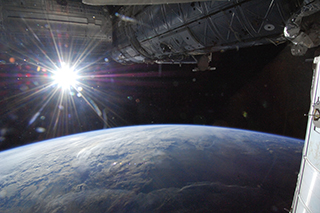
Perhaps we will find that we are pretty clear on the 'answer' but not so clear on the data. Does the image from the space station actually compel us to believe a particular 'answer'?
Activity: Follow the guidance in the paragraph below. Compare with others in your group. What differences and similarities do you notice?
Make a sketch of the earth as if you were floating above the north pole looking down. Sketch the sun to one side of your 'earth' (doesn't matter which side). On your drawing indicate where it's daylight and where it's night time on the earth. Draw two stick figures on your 'earth'. One standing where it is noon and the other where it is midnight. How did you decide this?
We are aware that the day represents a 24 cycle of the sun relative to the earth. If the sun is going around the earth how much time must it take to complete one orbit of the earth? What is the other explanation for the 24 hr day? Given that you are looking down on the N Pole can you figure out which way the earth is turning (towards the east or towards the west)? Draw a little stick person where you are standing at sunrise and sunset. Consider that sunrise is where you move from night to day and sunset is the opposite.
For each of the 4 stick figures indicate how much of the 'sky they can see.
Before you leave this exercise sketch (on a new part of your paper) the shape of the path of the earth going around the sun. Discuss any differences in that shape that you see.
[insert video here for the exercise]
Seasons:
Our individual perspectives on why there are seasons vary tremendously. Take a few moments and think about what you believe leads to the seasons here on earth.
Activity: Share your understanding about the seasons with others in your group. No judgement please. Very few people have a clear understanding or can explain why their 'personal model' works. We're just trying to get a lot of ideas out on the table to discuss.
A part of many explanations is the idea that the orbit of the earth around the sun is elliptical (it is indeed!). Along with the idea of an elliptical orbit is the idea that sometimes we are closer to the sun and sometimes further away (also true). If we think of the sun as a giant campfire then it makes perfect sense that when we're closer it's hotter (summer) and when we're further away it gets colder (winter). Good logic for sure.
Does this model explain the seasons in the US and Australia successfully? How are the seasons in Australia related to the seasons in the US? Can Australia be closer to the sun when we're further from the sun? Dang it.......
Here is a scale drawing of the earths orbit. It is, in fact, an ellipse that is 298 pixels from the sun at it's closest and 302 pixels away at it's furthest. Can you tell it's not a circle?

Public Domain Image, source: Christopher S. Baird.
I hope that this picture along with the seasons in Australia suggests that the elliptical nature of the earth's orbit can't be the explanation. So if not the orbit then what?
Tilt of the Earth's Axis:
The tilt of the earth's axis (23 degrees pretty much) is plausible next idea. But how does the tilt of the earth explain the seasons. If you have a tennis ball or basketball hold it up and tilt its axis by whatever you think 20 or 30 degrees is. Is the bottom 1/3 of the ball further from the sun than the top 1/3? Hopefully you can see it's not -- that blows the idea that summer and winter are about tilt and distance. So what is it?
Sun and Atmospheric Absorption:
Where is the sun in the sky in the winter relative to the horizon? Does the sun feel as warm in the winter as in the summer? Is that because of the sun or because of the temperature of the air around us? A definite chicken and egg problem. Here's an image you may have seen that seeks to explain why the sun feels 'colder' in the winter than the summer.
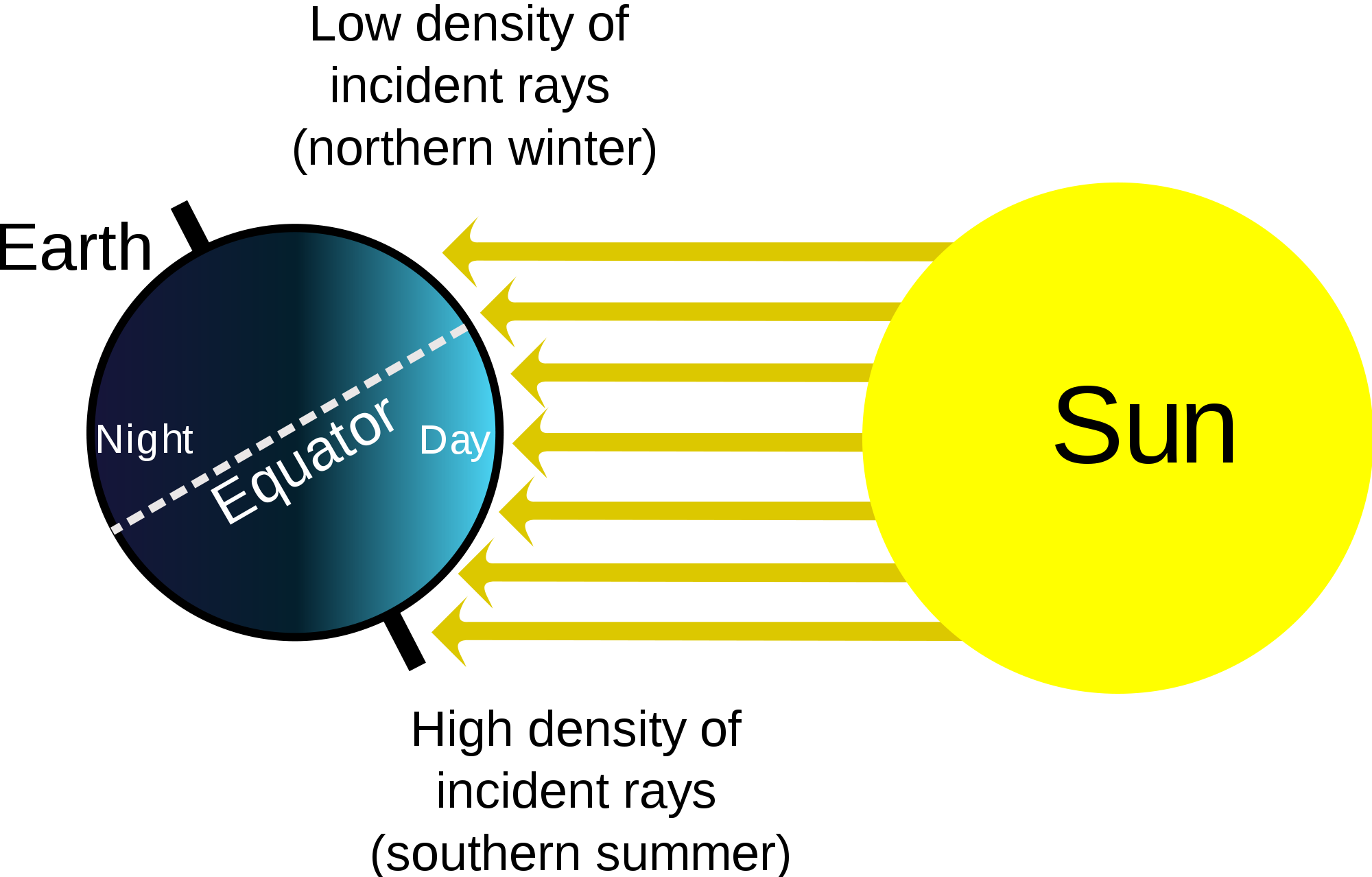
Yup -- the earth is tilted but what the heck does it mean? The words don't match the drawing. Please don't use this if you're going to explain the effect of the tilt to someone. See what you think of this one.

Public Domain Image, source: Sabine Deviche
This is nice because it shows the atmosphere (NOT to scale!!) and the twin effects of sunlight having a shorter path to get through the atmosphere in the middle and landing in a more concentrated spot. Further up the sphere the light travels through more atmosphere (dimming it down) and then is spread out over a larger footprint due to the 'slope' of the earth making it dimmer still. Here is what the data looks like for the intensity of the sunlight at different latitudes through the year. This plot includes both the dimming of the light due to the atmosphere AND the dimming due to spreading out on the sloped ground. Pretty dramatic differences yes?

Of course there is a problem -- this doesn't show the tilt of the earth so where does that come in to it?
If we combine the information from both of these graphics we can start to get somewhere. When it is winter in the northern hemisphere the north pole is tilted 'back' away from the sun. Even the equator is 'above' the midpoint of the atmosphere. This makes the sun dimmer as shown in the intensity plot. At the same time do you notice that the northern half of the globe spends more time in the dark (does this make sense based on your experience?) which means there is less time to capture the dimmer sunlight. You may notice that if you go far enough north that you can spin all the way around the earth and never get out of the night! For those who are interested this is the definition of the Arctic circle - where it is night 24/7 for some part of the year.
Just the opposite is happening in Australia. The sun goes through less atmosphere and is 'brighter' AND the days are longer so it absorbs even more of the brighter sun which leads to summer at the same time we're having winter. Cool! ....and complicated.
Here's the classic image that is often put in the text. Seems sort of clear but unless you understand ALL of the previous plots you don't have a full explanation for why this leads to seasons even though you have the 'official answer'. (looks like a very elliptical orbit doesn't it -- why?):
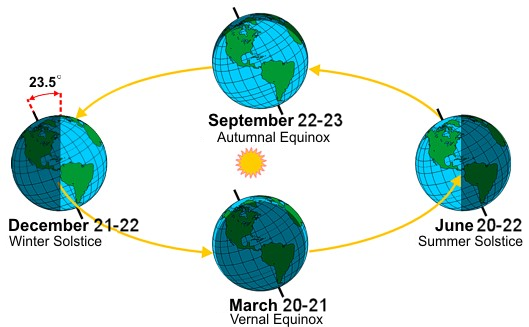
This is a good place to notice something important. Didn't we just learn that the earths orbit is essentially circular? Why does this orbit look so very elliptical? If you look carefully you will notice that summer and winter are the same distance from the sun so that's good. The reason for the ellipse comes from the world of art and is called perspective or foreshortening. When you look down through a circle at an angle as is illustrated the circle appears to be an ellipse. We have seen so many of these artistically correct representations of a circle in perspective that we (as students) have internalized the idea that the orbit is very elliptical when it is NOT. An unintended consequence of nice looking textbook art!
HW: Seasons/Moon
You are given a mystery planet with an axial tilt of 30 degrees. Decide which direction your planet is going around the orbit and indicate it on the illustration below or your own sketch. Sketch the location of the planet and the orientation of it's axis when it is summer in the southern hemisphere. Label this with a 1. Do the same for the location and orientation of the planet at the fall equinox and label it 2.
A Private Universe:
All of this discussion orginates with a video shot at a Havard graduation many years ago where they asked graduates (some of them are science students) this same question about why there are seasons and phases of the moon. If you want to watch the video it is currently hosted by the Annenberg project here. The video is called 'A Private Universe' and was one of the first research projects to clearly illustrate that telling students the answer to anything rarely sticks or results in long term understanding.
Concept Application:
Uranus is a planet with a really big tilt -- think about what the seasons might feel like there?
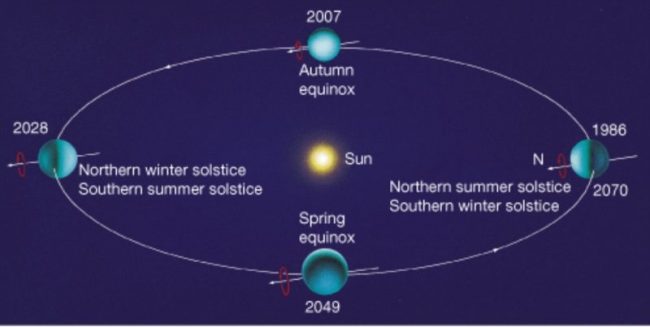
HW: Seasons/Moon
Mars has a similar axial tilt to that of the earth (25 degrees compared to 23 degrees). The orbit of Mars is much more elliptical than the earth (which is nearly a circle as we discussed). Mars is 20% closer to the sun at it's closest than at its furthest. How will this make the seasons on Mars different than the seasons on earth? Remember that one characteristic of seasons on earth is that summer in the northern and southern hemispheres are pretty much the same. Explain your reasoning.
Moon Phases:
We'll develop the same process for trying to understand the phases of the moon. If you know someone who lives somewhere else in the world text them and see if they are seeing the same phase of the moon as you at the same time....(what did they say?)
Activity: We will do this first activity together. Then you will repeat it for other cases.
Make a sketch of the earth as if you were floating above the north pole looking down. Sketch the sun to one side of your 'earth' (doesn't matter which side). Show the night and day sides of the earth. Now sketch the moon near the earth but on the opposite side of the earth from the sun. Sketch the light and dark sides of the moon -- are you wondering about the shadow of the earth? Sketch stick figure on the earth at midnight and describe what they see in the night sky when the look at the moon. Can they see the moon at sunset?... sunrise?
[insert video here]
Activity: Following the same process but for a couple of different points in the moon's cycle.
Now sketch a moon above the sunrise or sunset point on the earth. Sketch the light and dark sides of the moon. What does an observer on the earth see? Can they see the moon during the day? All night?
Now sketch a moon between the earth and sun. Does the moon block the sun (normally)? Sketch the light and dark sides of the moon. What does an observer on the earth see? Can they see the moon during the day? During the night?
Phases of the Moon:
In an ideal world you could now put to where the moon is relative to the earth and sun for each of the phases of the moon shown below. From your sketch you can also tell me when to look for the moon relative to sunrise and sunset. Who needs the SkyView app!
HW: Seasons/Moon
The Moon’s right half is illuminated and it is midnight. Where in the sky do you see this Moon? Make a sketch that helps explain your reasoning.
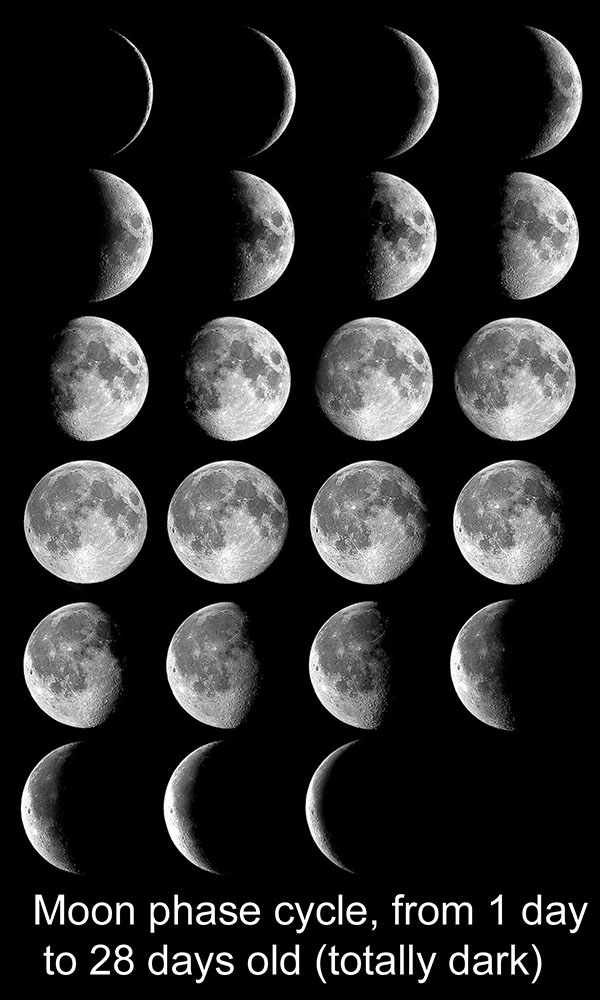
Dark Side/Far Side:
What do you notice about the patterns that you see on the 'face' of the moon in the images? What does this say about the 'other' side of the moon? Do we ever see the other side of the moon from earth? Is it always dark on the back side of the moon? What does this mean about how the moon turns as it progresses around the earth?
Better Scales:
Every person I have ever met makes a sketch very much like the ones we have made and they are terribly out of scale. Let's get a sense for what a more realistic scale would be. The earth is 6300 km in radius (roughly), the moon is 1700 km (roughly), and the moon is about 400,000 km away from the earth. This means the moon should be about a quarter of the size that we draw then earth. It also means we should place the moon almost 40 earths (remember the diameter of the earth is about 12,000 km) away. That won't even fit on my paper for crying out loud. We'll try to set this up with the balls in class. When you see this physically does it seem like people on different parts of the earth will see the moon differently?
Given this physical picture of the earth and the moon is the idea that the moon goes around the earth every day consistent with your observations? How do you explain this to someone with a couple of appropriate balls?
Where is the moon relative to the sun and the earth at each of the major phases (new moon, quarter moons, and full moon)
Is your explanation consistent with this picture? There is possible source of confusion in this picture -- can you spot it?

Here's a pretty nice animation (not to scale) of how the moon's phases progress.
Assignment: HW Seasons/Moon
Complete and assemble your solutions to all the HW problems listed here. Scan to a pdf and turn in on LMS. Please review HW format expectations for guidance about your homework solutions.
Reading Ahead:
Next time we will continue our explorations of the earth-moon system on the Sun, Earth, Moon II breadcrumb. This will get us started understanding eclipses and the actual path of the earth and moon around the sun.
